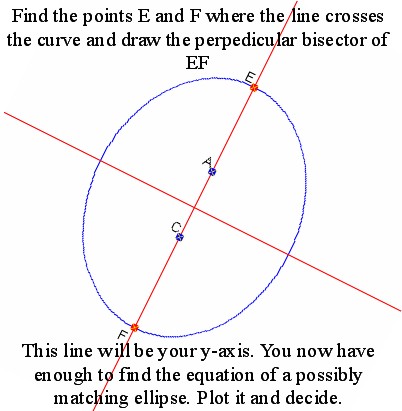Here are some definitions of the vertex of a parabola.
One is complete garbage, one is correct though put rather chattily.
The rest are not definitions, though very popular (this is just a selection). But they are true statements
Mathwarehouse: The vertex of a parabola is the highest or lowest point, also known as the maximum or minimum of a
parabola.
Mathopenref: A parabola is the shape defined by a quadratic equation. The vertex is the peak in the curve as shown on
the right. The peak will be pointing either downwards or upwards depending on the sign of the x2 term.
Virtualnerd: Each quadratic equation has either a maximum or minimum, but did you that this point has a special name?
In a quadratic equation, this point is called the vertex!
Mathwords: Vertex of a Parabola: The point at which a parabola makes its sharpest turn.
Purplemath: The point on this axis which is exactly midway between the focus and the directrix is the “vertex”; the vertex is the point where the parabola changes direction.
Wikibooks: One important point on the parabola itself is called the vertex, which is the point which has the smallest distance between both the focus and the directrix. Parabolas are symmetric, and their lines of symmetry pass through the vertex.
Hotmath: The vertex of a parabola is the point where the parabola crosses its axis of symmetry
Scoring is 10 points for finding the garbage definition and 5 points for the correctish definition !!!! Go for it!
When I studied parabolas, back in 1958 or so (!) the parabola had an apex. So I checked the meaning of vertex, and found that the word was frequently misused.
Here is a good account: https://en.wikipedia.org/wiki/Vertex_(curve)
Basically a vertex of a curve is a point where the curvature is a maximum or a minimum (in non math terms, most or least curved).
Here are two fourth degree polynomials, one has three vertices and the other has five. The maximum curvature points are indicated. The minimum curvature points are at the origin for the first curve, and at the points of inflexion for the second curve (curvature = zero)
A hyperbola has two vertices, one on each branch; they are the closest of any two points lying on opposite branches of the hyperbola, and they lie on the principal axis. On a parabola, the sole vertex lies on the axis of symmetry. On an ellipse, two of the four vertices lie on the major axis and two lie on the minor axis.
For a circle, which has constant curvature, every point is a vertex.
The center of curvature at a (nice) point on a curve is the center of the closest matching circle at that point. This circle will usually lie “outside” the curve on one side of the point, and “inside” the curve on the other side. Look carefully at the picture. It is called the osculating or kissing circle (from the Latin).
The center of curvature can be estimated by taking two point close to the point of interest, finding the tangents at these points, and then the lines at right angles to them and through the points. the center of curvature is roughly at the point of intersection of these two lines
The diagram below shows this estimate, for the blue parabola, at the vertex.
Finally (this has gone on further than expected!) I found this delightful gif.














